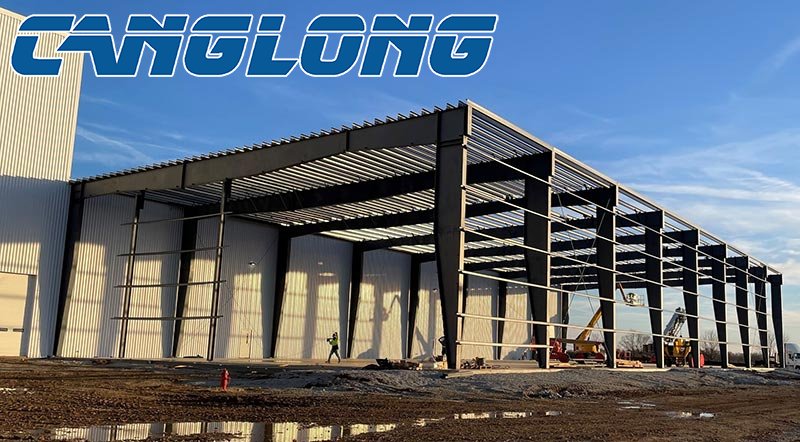What are the construction considerations for prefab metal workshop?
Prefab metal workshops have become a popular choice for many industries due to their affordability, durability, and ease of construction. However, building a prefab metal workshop requires careful planning and consideration of several factors. In this article, we will discuss some of the important considerations to keep in mind when constructing a prefabricated workshop building.
Site Selection
The first and most crucial step in building a metal prefabricated workshop is selecting an appropriate site. The site should be level, well-drained, and free from any obstructions that may hinder the construction process. It should also be easily accessible for the delivery of materials and equipment. The site should also be zoned for industrial use and comply with all local building codes and regulations.

Design and Layout
The design and layout of the workshop should be carefully planned to ensure maximum functionality and efficiency. The workshop should be designed to accommodate all necessary equipment and machinery, as well as provide adequate space for storage and work areas. The layout should also allow for easy movement of materials and products throughout the workshop.
Foundation
The foundation is a critical component of any building, and a metal prefabricated workshop is no exception. The foundation should be designed to support the weight of the workshop and all equipment and machinery inside it. The foundation should also be properly insulated to prevent heat loss and reduce energy costs.
Materials
When constructing a prefab metal workshop, it is important to choose quality materials that will provide durability and longevity. The metal framing should be made of high-quality steel that is corrosion-resistant and able to withstand harsh weather conditions. The roofing and siding should also be made of durable materials that can withstand the elements.
Insulation
Proper insulation is essential for maintaining a comfortable and productive work environment inside the workshop. The insulation should be installed in the walls, roof, and floor to prevent heat loss and reduce energy costs. Adequate insulation will also help regulate the temperature and humidity levels inside the workshop, which is crucial for preserving equipment and machinery.
Ventilation
Ventilation is important for maintaining good air quality inside the workshop and preventing the buildup of harmful fumes and gases. Proper ventilation should be installed to allow for the exchange of fresh air and the removal of contaminants. This can be achieved through the installation of ventilation fans, windows, and exhaust systems.
Lighting
Good lighting is crucial for ensuring safety and productivity inside the workshop. The workshop should be well-lit to prevent accidents and provide adequate visibility for workers. High-quality lighting fixtures should be installed to provide ample illumination throughout the workshop.
Conclusion
Building a prefab metal workshop requires careful planning and consideration of several factors. Site selection, design and layout, foundation, materials, insulation, ventilation, and lighting are all important considerations that must be taken into account. By following these guidelines, you can ensure that your prefabricated workshop building is built to last and provides a safe and productive work environment for your employees.
Latest News
-
Can metal sandwich panels be used as industrial high-temperature protection materials?
-
Steel structure warehouse: innovative solution for efficient storage and modern storage units
-
Packaged and shipped steel structure garage project for American clients
-
Customized steel structure garage: meeting diverse parking needs






